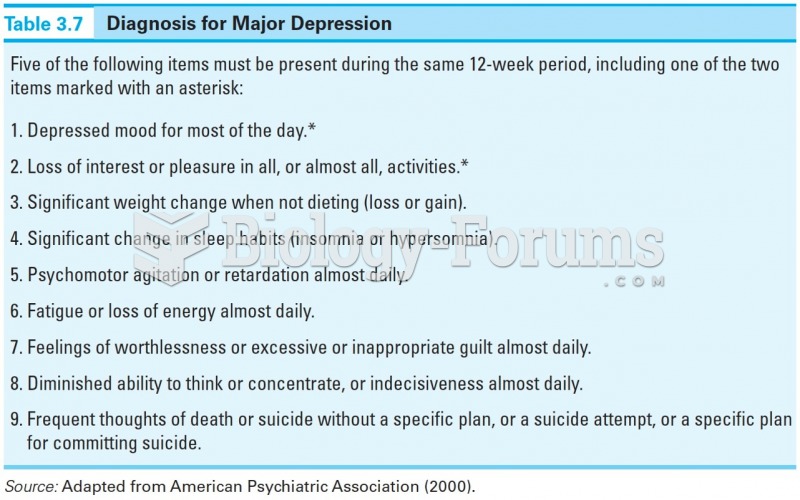|
|
|
Bacteria have flourished on the earth for over three billion years. They were the first life forms on the planet.
Increased intake of vitamin D has been shown to reduce fractures up to 25% in older people.
If all the neurons in the human body were lined up, they would stretch more than 600 miles.
Human neurons are so small that they require a microscope in order to be seen. However, some neurons can be up to 3 feet long, such as those that extend from the spinal cord to the toes.
Pink eye is a term that refers to conjunctivitis, which is inflammation of the thin, clear membrane (conjunctiva) over the white part of the eye (sclera). It may be triggered by a virus, bacteria, or foreign body in the eye. Antibiotic eye drops alleviate bacterial conjunctivitis, and antihistamine allergy pills or eye drops help control allergic conjunctivitis symptoms.







